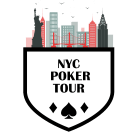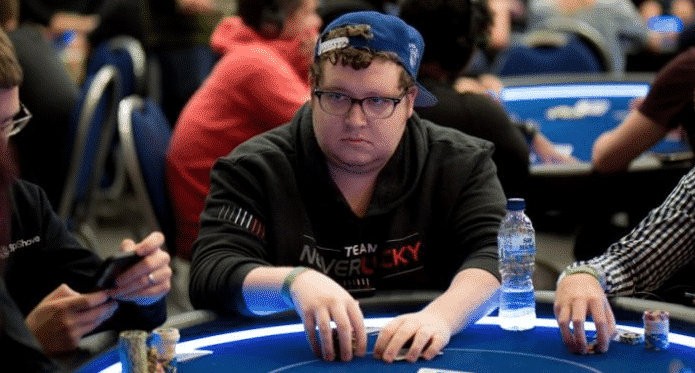The Upswing Poker Lab is a poker training course taught by Doug Polk and Ryan Fee. The Lab is updated regularly with in-depth learning modules, theory videos, and a wealth of information to make you a better poker player.
It takes wisdom and grit to be successful at the poker table, and, since poker isn’t a solved game, an understanding that there’s always room for improvement.
Parker “Tonka” Talbot is a player with all of these qualities. After shipping the Big $109 on PokerStars, he reviewed every hand in a nine-part video series made exclusively for Upswing Poker Lab members.
Today I’ve got 3 lessons from Tonka’s analysis to share with you. Let’s get to it!
1. Don’t be afraid to make an unorthodox play, so long as it can be justified
Lesson from ‘Shipping the Big $109 – Part 4, available in the Upswing Lab.
Just because a play doesn’t seem ‘normal’ doesn’t mean it’s wrong. In fact, breaking convention is exactly what drove the strategic evolution in poker over the last decade or so.
Here is a perfect example from Tonka’s tournament review. A bit of back-and-forth with Ryan Fee resulted in their joint support of making a somewhat unconventional play:
PokerStars Big $109. Blinds 2,500 / 5,000 / 625. 8-Handed.
Hero (93,872) is dealt 8 6
6 UTG+1.
UTG+1.
UTG folds. Hero raises to 10,750. 3 folds. BTN calls. SB folds. BB calls.
Flop (39,750): 8 7
7 4
4
BB checks.
Hero…?
Now, Tonka admitted that his open with 8-6 suited from early position is far too loose with this stack size, but the result is this intriguing postflop situation! Tonka and Fee decide that the most effective play is to shove for a 2x pot-sized bet. This might strike you as bizarre, but they have compelling reasons to do so.
First, checking is not an effective play. Our hand can be outdrawn, and at this stack-to-pot ratio, the pot is equivalent to almost 50 percent of our stack—chips we want to collect!
With betting, there are a couple options. The first is to bet between 35–50 percent of the pot, intending to shove on the turn. This protects our equity, allows us to get called by worse, and folds out unpaired over cards. But shoving makes the most sense. Our main goals with this hand are to deny equity and have the best chance of scooping the pot. We accomplish both by going all-in.
Of course, when we get called we’ll often times be behind, and we’ll sometimes be flipping versus a flush draw. But we gain heaps of chips when the shove forces folds, which will happen the majority of the time.
2. Construct ranges with good equity distribution
Lesson from Shipping the Big $109 – Part 5, available in the Upswing Lab.
We should have a diverse mix of both strong hands and bluffs in each of our betting, checking, calling and raising ranges. This allows us to make nutted hands across a variety of board textures and runouts.
Tonka and Ryan discuss this idea during a blind-versus-blind, limped pot scenario:
PokerStars Big $109. Blinds 5,000 / 10,000 / 1,250. 5-Handed.
Hero (442,725) is dealt 6 4
4 in the SB.
in the SB.
3 folds. Hero calls. BB checks.
Flop (26,250): 6 5
5 3
3
Hero…?
With a vulnerable top pair and open-ended straight-draw in a blind vs. blind pot, betting is reasonable. However, there are a couple of reasons to put this hand in our checking range.
First, it’s not strong enough to be bet for value over multiple streets. It makes more sense to go for value when we have a 6 with a stronger kicker like A-6, K-6, or Q-6 — all of which are likely in our range.
Second, we needn’t worry about equity denial because we have several outs to improve to the nuts. So, we can place middling pocket pairs in our betting range (along with some sets) and check our pair and straight-draw combos. With well-balanced ranges in mind, we can bet some unpaired, straight-draw combos as bluffs. This way we can make straights on certain turns whether we have bet or checked.
3. How to maximize EV with small pocket pairs
Lesson from Shipping the Big $109 – Part 7, available in the Upswing Lab.
Conventional wisdom says we should try to see cheap flop with small pocket pairs, hope to flop a set, and then go from there.
But this approach is often too passive and can result in missed value. This is especially true in the final stages of a tournament, when we can leverage ICM pressure.
Let’s look at a hand from Tonka’s final table where this applies:
PokerStars Big $109. Blinds 9,000 / 18,000 / 2,250. 5-Handed.
Hero (1,003,152 chips) is dealt 3 3
3 UTG.
UTG.
Hero raises to 42,660. CO (561,832 chips) raises to 108,000. 3 folds. Hero…?
It’s notable that Tonka is the chip leader at this point, and that the CO three-bettor is an aggressive player who is in fourth chip position out of five with big pay jumps at stake.
Given this dynamic, four-bet jamming as a bluff with a hand like 33 is often effective. Calling the three-bet with a hand like this is not an option, since we will not realize equity well post-flop, and we are not deep enough to set mine. Folding is okay, but exploitable if we fold too often against opponents who three-bet aggressively.
By four-betting, we deny a ton of equity by folding out many of our opponent’s unpaired, three-bet bluffs. Against A-K and A-Q we are a slight favorite, and by jamming we realize all of our equity. We’re only crushed by over-pairs. And if we happen to run into one, we’re not out of the tournament!
Source : www.cardplayer.com





